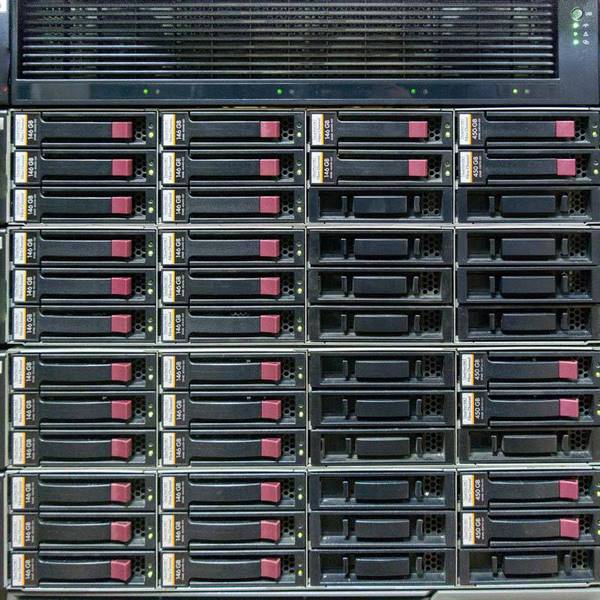RAID 5: block-level striping with distributed parity
Le RAID 5, as known as block-level striping with distributed parity, is a secure RAID system. It can work with a single drive failure. If more than one drive fail, the RAID system will stop working.
Function of RAID 5
The operation of RAID 5 relies on data distribution and parity calculation to ensure fault tolerance. To form a RAID 5, a minimum of three hard drives is required. The main idea behind RAID 5 is to evenly distribute the data and parity across all the system's disks.
Let's take a concrete example of a RAID 5 composed of five hard drives. When data needs to be written, it is divided into blocks of X sectors. The first block of the file is stored on the first hard drive, the second block on the second hard drive, the third block on the third hard drive, and so on. Once these four blocks are recorded on the four hard drives, a parity calculation is performed, taking into account these blocks. The calculated parity is then stored on the last hard drive of the RAID 5. This process is repeated for each subsequent data block.
To ensure balanced distribution, the parity changes disk drives in a cyclic manner. This means that the parity for the first block can be stored on the second hard drive, the parity for the second block on the third hard drive, and so on.
The calculated parity is typically obtained using XOR (exclusive OR) on the data blocks. This parity plays a crucial role in reconstructing the data in case of a hard drive failure. The loss of a hard drive, or more precisely, the loss of a data block, can be calculated using the parity. This is equivalent to solving a single-variable equation to recover the missing data.
When a failed hard drive is replaced, the data is automatically rebuilt from the other hard drives present in the RAID 5. Thanks to the parity, the system is capable of reconstructing the missing data and restoring the integrity of the RAID.
However, it is important to note that due to the use of parity, configuring a RAID 5 results in the loss of storage space equivalent to a full hard drive. For example, if you configure a RAID 5 with five hard drives, you can only use the total space of four drives to store your data, with the fifth drive reserved for parity.
In summary, RAID 5 offers fault tolerance by distributing the data and calculating parity across multiple hard drives. This allows for data recovery in the event of a hard drive failure. However, configuring a RAID 5 results in a loss of storage space equivalent to one hard drive, which needs to be considered when planning the storage capacity of the RAID 5 system.
RAID 5 failures
The common RAID 5 failures are :






